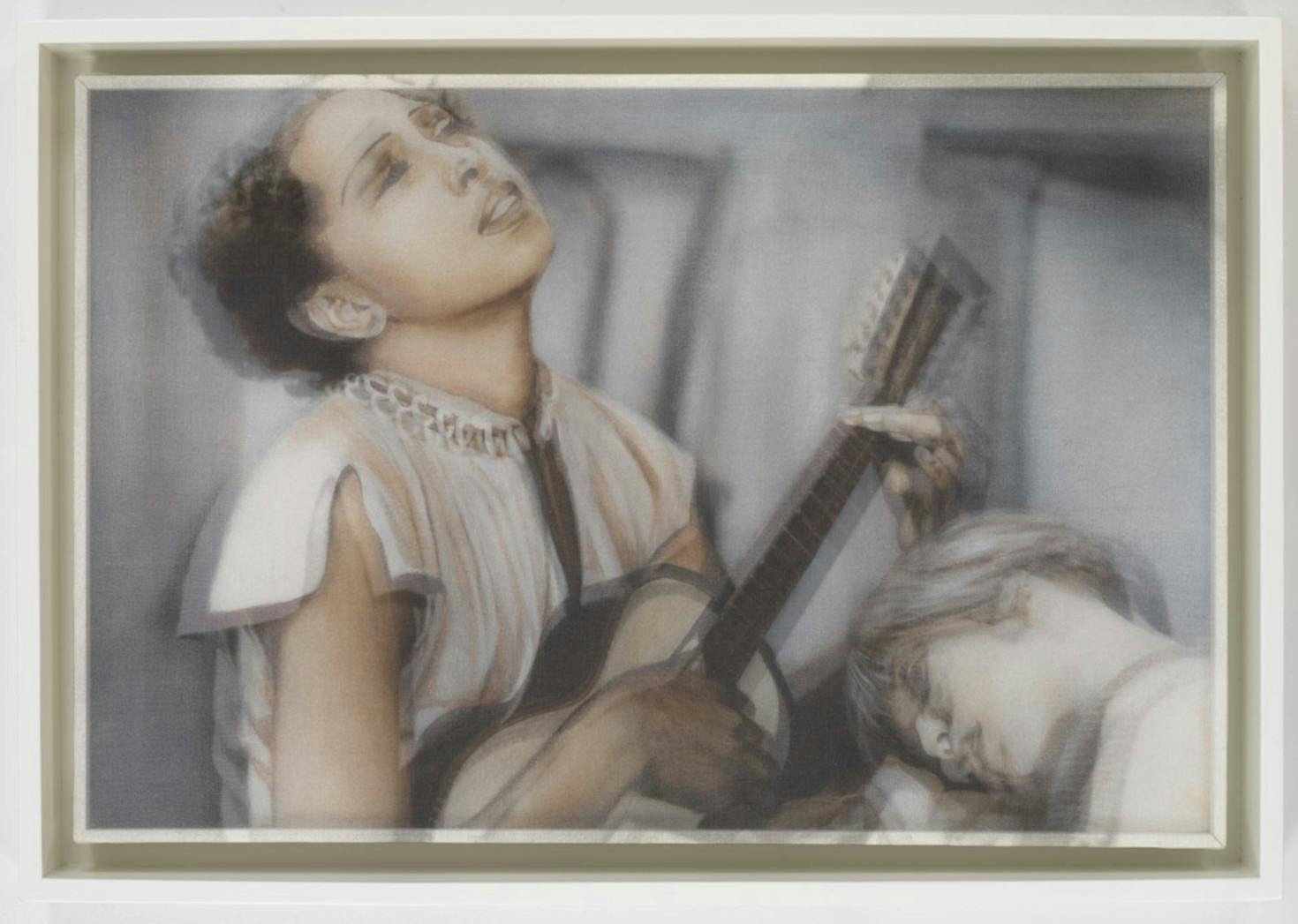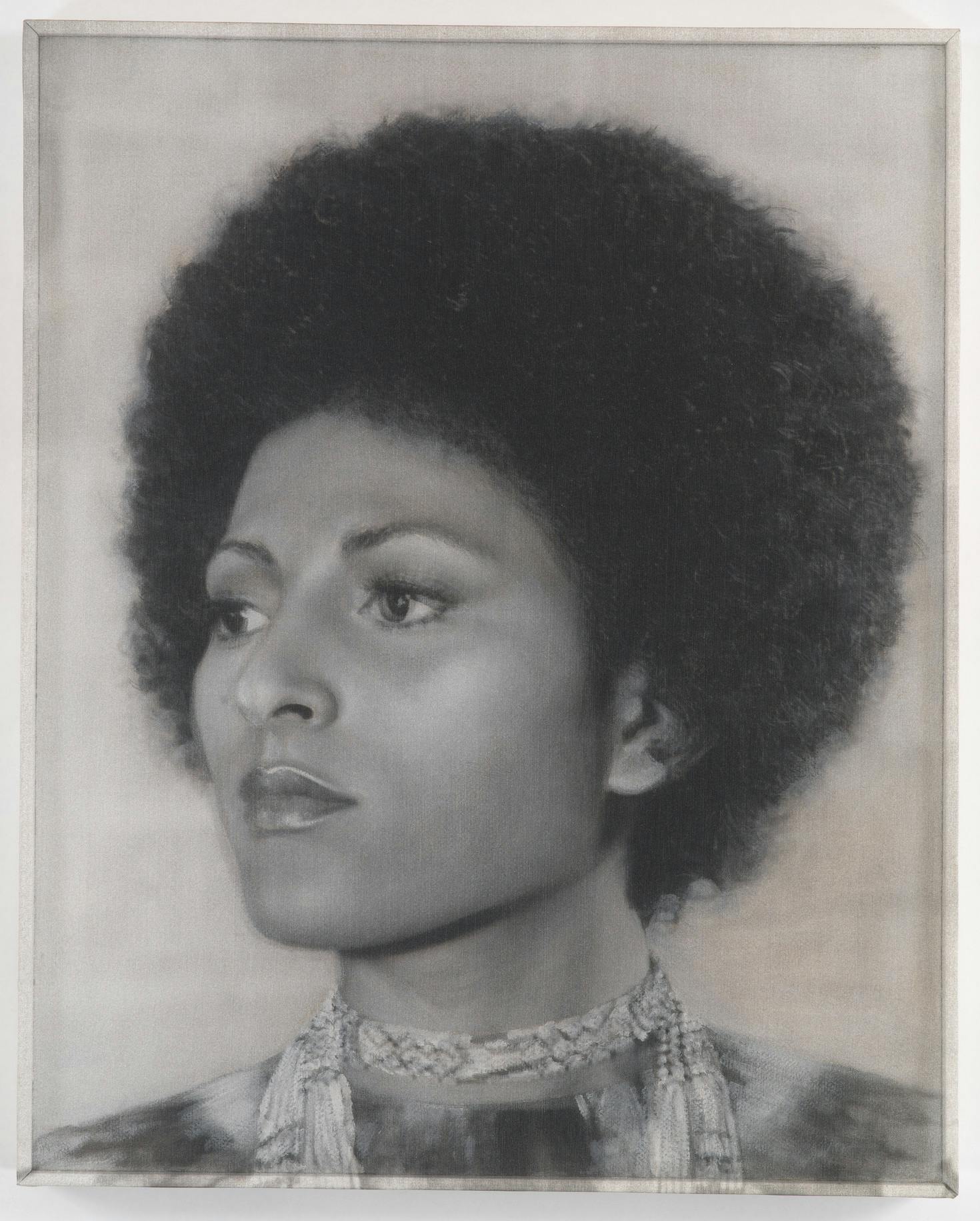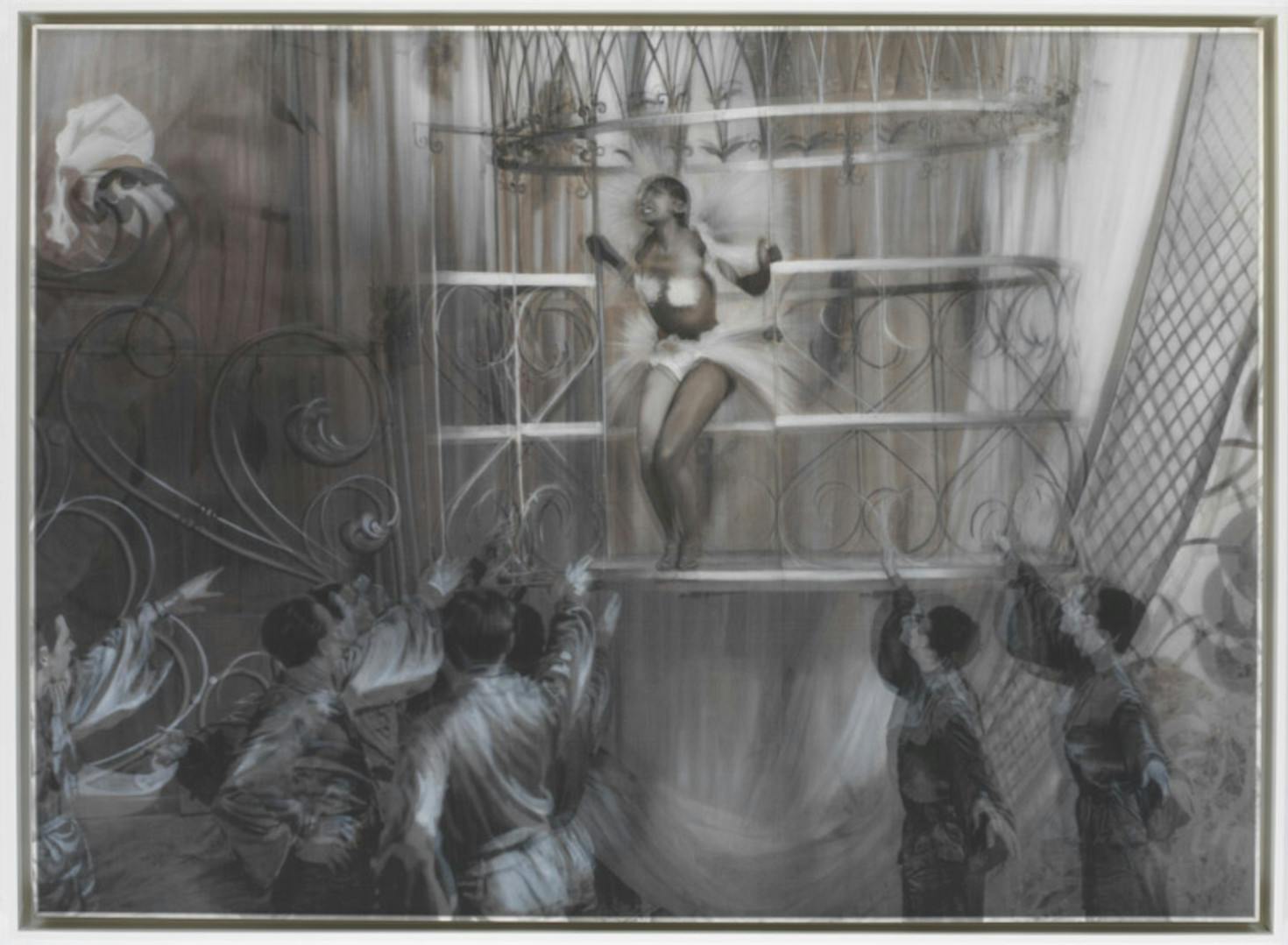Projection Series
Paintings: oil on linen, toner on silk
2009-2010
McCallum & Tarry

Stickup (After Foxy Brown, From the Projection Series)
"McCallum and Tarry’s new Projection series consists of rectangular, oil-on-linen paintings with the artists’ signature sheer silk overlay. The imagery for these pronounced but chromatically muted canvases stems from the artists’ archival research on film stills and photographs of stage performances, and thus offers a context for their newest video. The palette of these paintings is primarily black-and-white, with accents in varying skin tones; the introduction of color establishes depth and emotional space in the pictorial field.
The Projection series explores the intersection of race and the entertainment industry by bringing to the fore a panoply of racial stereotypes propagated in theater and cinema from the 1920s through the 1970s. Reproducing canonical scenes and iconic characters drawn from minstrel shows, blaxploitation films and more contemporary performances provides an opportunity to expose not only the racial tensions at work within these narratives but also the ways in which reproducing these at times hyperbolic images offers the possibility of dismantling the prejudices that underpin them, pointing to racial difference as a cultural construction. The transparent silk stretched over the oil paintings creates the illusion of movement, which alludes to the structure of cinema itself. In other words, through McCallum and Tarry’s double structuring of the pictorial plane, these paintings become cinematic surfaces, and their subjects re-animated, as seen in Family Portrait I (after Imitation of Life, 1934) (2009) and Family Portrait II (after Imitation of Life, 1934) (2009). These images re-stage critical scenes in John M. Stahls’ Imitation of Life (1934), when a black single mother is confronted by her lighter-skinned daughter who, in trying to “pass” as white, rejects not only her racial background but also her mother’s love and affection.



The source material for Projection brings together theater, performance and cinema through works whose subject matter bridges the gap between those media. Iconic figures appear in a number of these canvases. For example, in Fashion Show (after Mahogany) and Reflection (after Mahogany), both from 2009, Diana Ross struts before a news kiosk loaded with periodicals that mirror her own image as an up-and-coming fashion designer and then on the runway itself. Likewise, Bill “Bojangles” Robinson appears in a number of canvases as a stage performer within films, such as Copasetic (after Bill “Bojangles” Robinson) (2009). These paintings exemplify the dynamic transformations enabled by Projection, from still images of films that crystallize the emotional crises of the narrative to “moving pictures” that challenge the limits of painting and reverberate with similar drama. The resulting images in Projection generate a contemplative, illusionistic forum in which history meets collective memory and nearly forgotten static images that can be revivified."
Source: "Projection." In Bearing Witness: Work by Bradley McCallum & Jacqueline Tarry, edited by Jennie Hirsh, 24-25. Baltimore, MD: Maryland Institute College of Art, 2010.
McCallum & Tarry
Embrace
(2009)
(after Live and Let Die, 1973, From the Projection Series)
Exhibitions
Bearing Witness: Work by Bradley McCallum & Jacqueline Tarry
The Contemporary Museum, Baltimore, MD
2010
© Bradley McCallum 2025

















